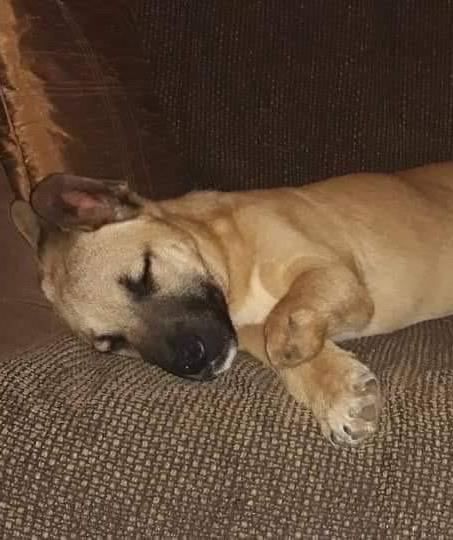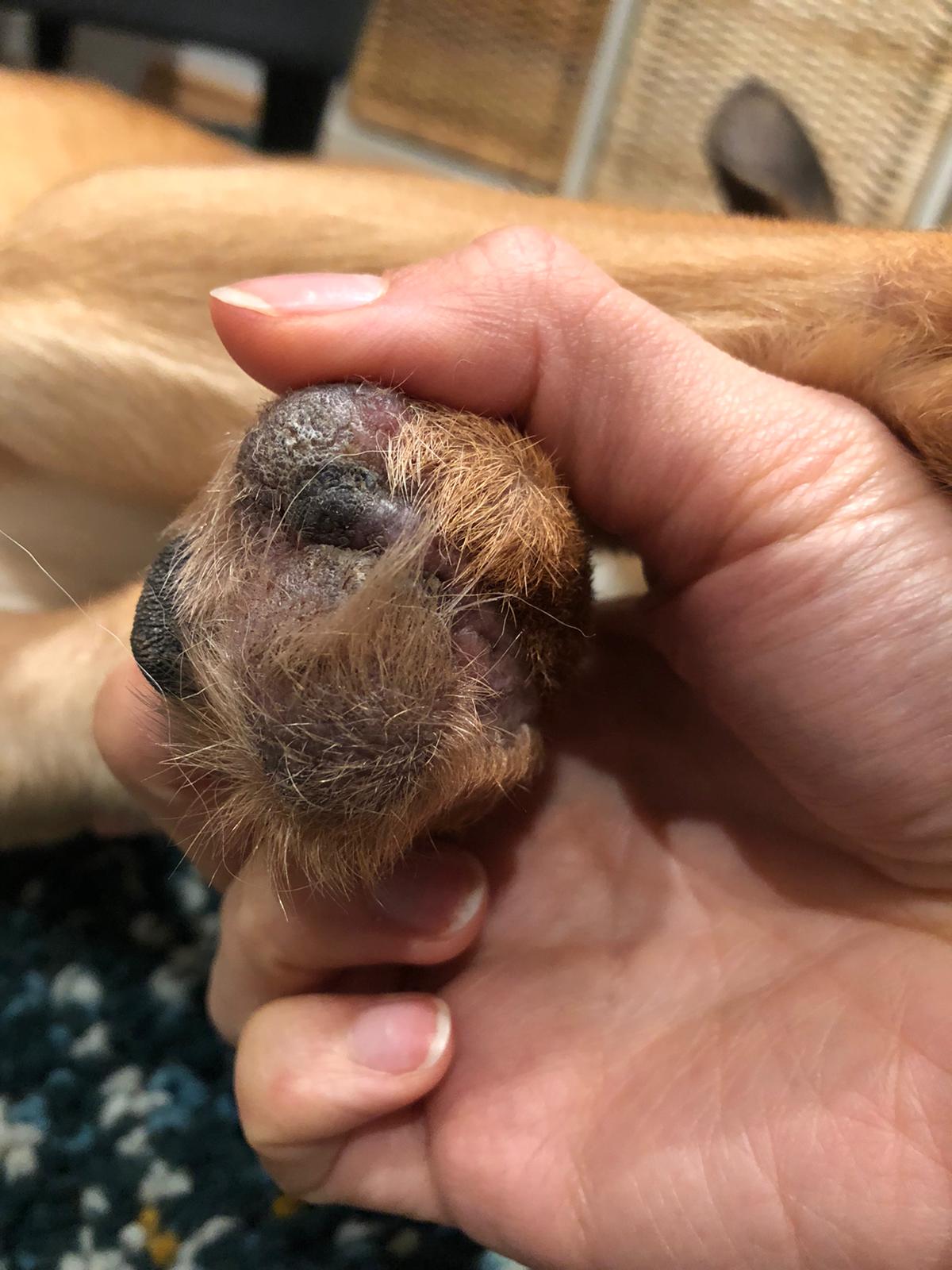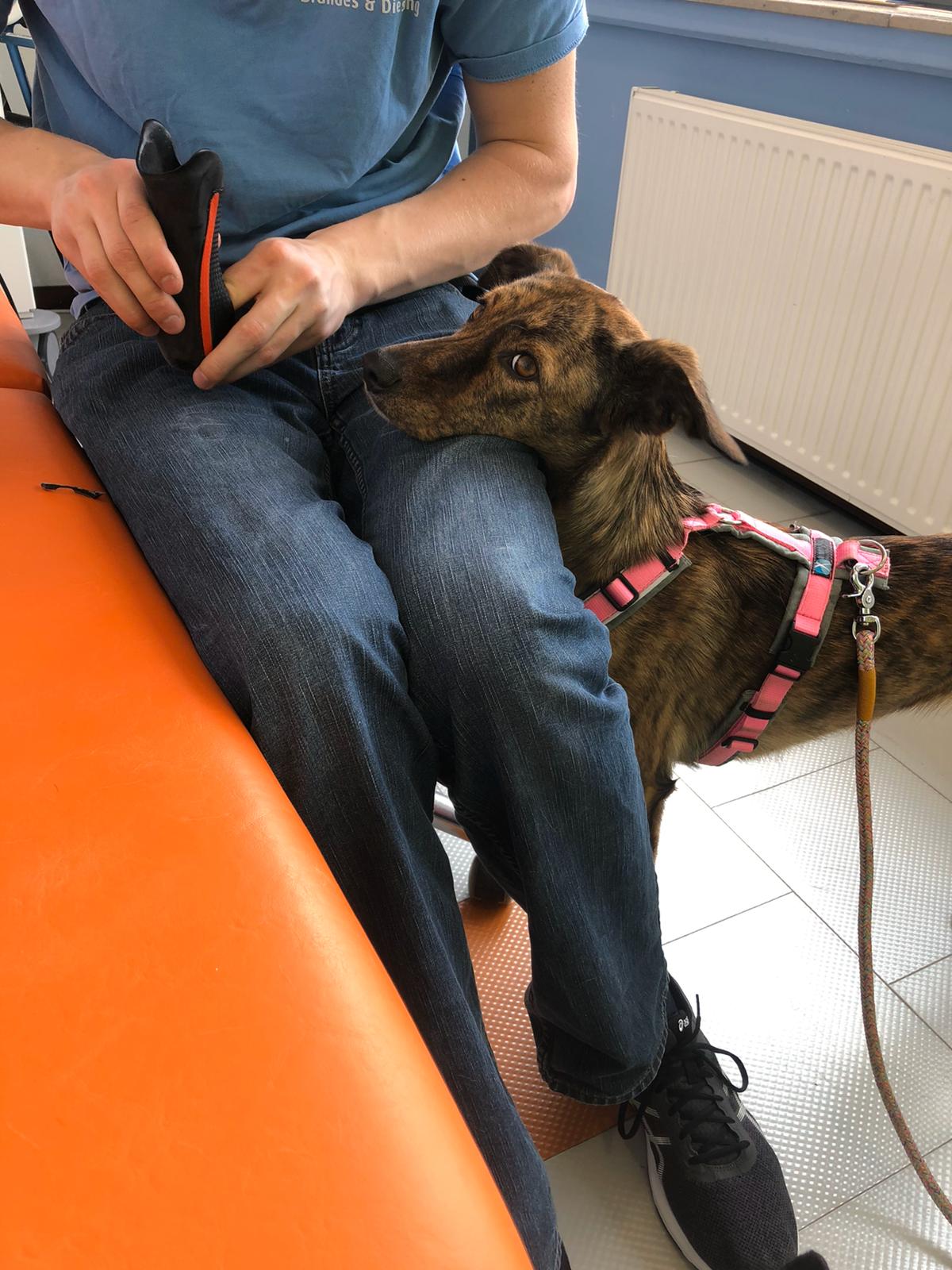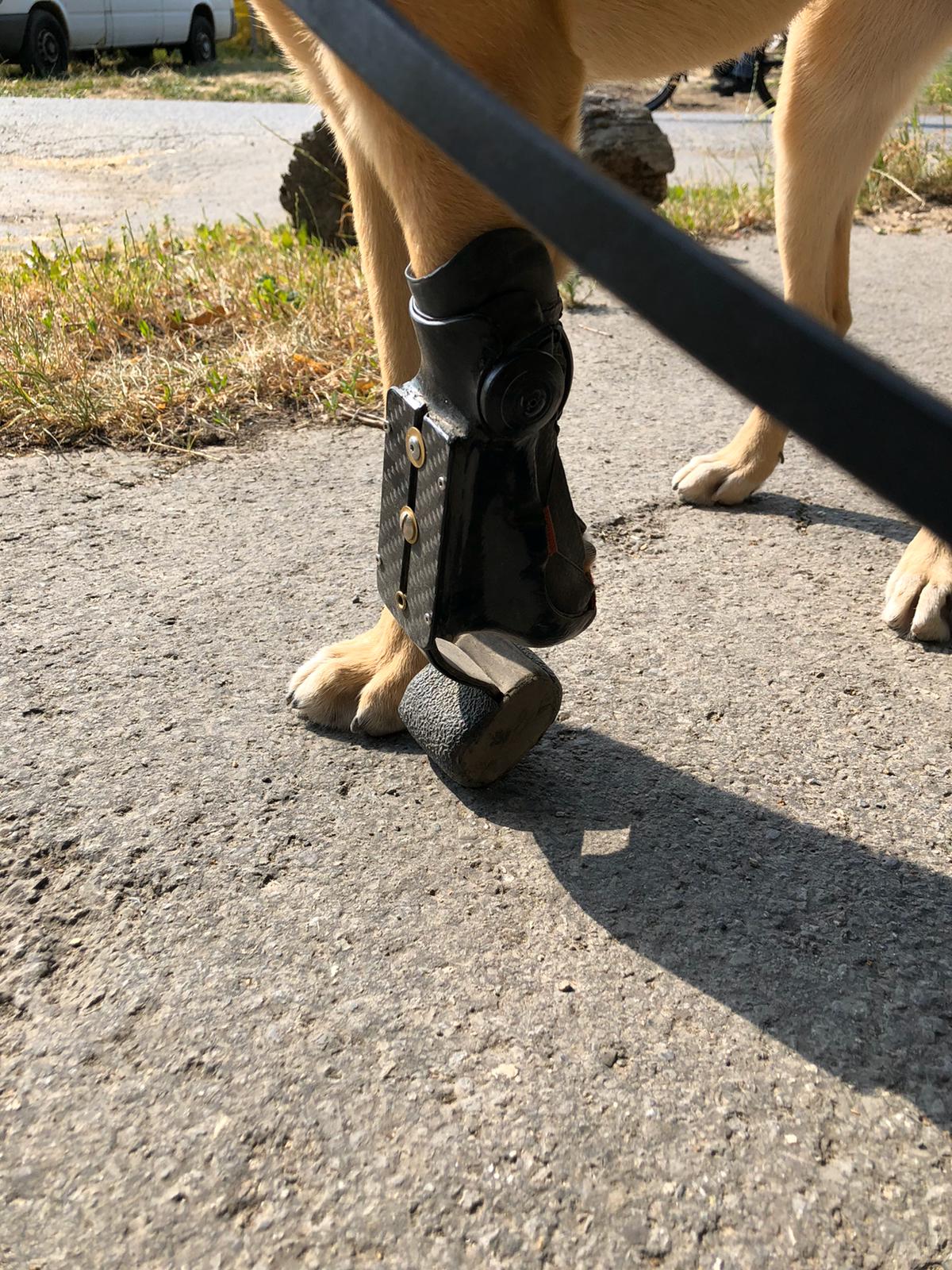The interim (temporary) prosthesis for dogs
Your questions and my experiences
When people meet us on walks or when we are in the city with the dogs, we always hear the most different statements: “The dog broke a leg!”, “Look, Mommy, the dog has something on its leg.” or “The dog is hurt, poor thing.”Very seldom a “correct” statement comes to our disabled dog, namely that he is missing a paw and he is wearing a so-called prosthesis.
In this blog post I would like to introduce you to the topic of three-legged dogs and prosthesis and answer questions that we encounter again and again on Instagram – our social media channel.
What is a prosthesis made of anyway?
Mateos prosthesis is made of carbon. This is a light fibre-resin mixture, which is also used in racing or for airplanes. It consists of a silicone liner, the prosthesis socket and the prosthesis foot.
You can compare the silicone liner to a sock for “normal” people. After all, we don’t wear shoes without socks – at least most of the time 😉 It creates the connection between the residual limb and the prosthesis. The prosthesis socket is the hard shell – virtually the shoe in humans – of the entire technology. The carbon foot (also the spring) is like the sole of a shoe and serves as a shock absorber. But the energy does not dissipate in the case of Mateo’s prosthesis. It is partially sprung back. This enables it to cover greater distances. People are often surprised how well the prosthesis holds on to Mateo’s leg. Even among the questions of our followers the question “How does the prosthesis hold at all? I like to quote our orthopaedic mechanic here: “The leg is braced with a so-called boa fastener, in principle like a lacing on a shoe.”
The interim prosthesis
Mateo came to Germany from Greece when he was about 5 months old. Here he found his way to a prosthesis after a short time. You can read the whole story in this blog post. As it is generally known, dogs are not fully grown until the first year of life at the earliest. So Mateo was still growing when he got his first prosthesis. For Mateo this means that he will get an interim prosthesis – a temporary prosthesis – for the time being. At 5 months, his physique will still change and we have had the same experience during his first year of life. An interim prosthesis is given to both humans and animals, because: The residual limb changes in the early phase (in humans e.g. after the operation) and a readjustment will be necessary several times.
The transitional prosthesis therefore serves to allow Mateo to get used to the prosthesis and the residual limb to develop its future, permanent “shape”. During its growth phase, we visited our orthopaedic technician three times to adjust the prosthesis.
Every now and then the prosthesis ended up in a box and finally in the post office. So Nils was able to make small adjustments to the prosthesis without having to leave the pinched family 6 hours by car. My tip: Find an orthopaedic mechanic near you. That will make many things easier for you. I could have certainly looked around, because as I was able to see positively, there are quite a few companies that offer dog prostheses. But Rafael and I (and especially Mateo!) are absolutely satisfied with Nils. We are happy to accept the additional effort. On the pictures you can see that the foot and the spring of the prosthesis have been changed several times. Why? Because Mateo not only gained in size but also in weight over time. He also discovered a love of movement: He became more active, faster, more agile and fierce.
As soon as the residual limb volume remains stable, a definitive prosthesis is fabricated. During construction Nils made sure that the temporary prosthesis is height adjustable and can grow with Mateo to a certain degree. Therefore it is a bit more massive than the final prosthesis will be. In preparation for the final prosthesis we had Mateo’s growth joints x-rayed when he was one year old. Competent veterinarians will be able to tell you whether your dog is full-grown or not. Mateo was officially full-grown on 01.11.2019. So the planning for Mateo’s new prosthesis could officially start!
What is important with a prosthesis?
Prostheses are made by orthopaedic mechanics. However, there is no special training for dog prostheses, so there are very big differences in the way they are made. This explains the many different looking prostheses on animals, which nowadays can often be admired on social media channels in the form of videos.
When constructing a prosthesis, one is guided by the patient’s mobility class and degree of activity. There are 4 mobility classes in total. The first mobility class is called “indoor walker” – here the prosthesis is used for short, ground-level distances. “Limited outdoor walker” is the name of the second mobility class: The prosthesis wearer can move slowly with small obstacles. The third level is called “Unrestricted Outdoor Walker” (when I first dealt with this topic I had assigned Mateo to this class) and here the patient can not only move slowly, but also take on a faster pace and move on different surfaces. The fourth and thus last mobility class is called “Unrestricted outdoor walker with particularly high functional demands”. While reading this last class, I had to smile and without having read on, I knew that Mateo did not belong in mobility class 3, but in the fourth. Our orthopaedic technician and I agreed on that. Here the prosthesis wearer is able to move around without restrictions on distance and duration and the prosthesis is often exposed to a high impact load. Mateo likes to tussle and play with other dogs. It can be a bit more violent – that is exactly Mateo’s way of playing. Over time, Nils (our orthopaedic mechanic) and I have been able to determine this.
What does a prosthesis cost?
One of the most popular questions. Understandable! Anyone who is toying with the idea of taking a disabled dog with them and allowing them to have a prosthesis must be able to afford it in the end. The costs for a prosthesis are about 600,- Euro -1000,- Euro for plastic and for carbon from 1000,- Euro to 1500,- Euro. Depending on the company, the prices can vary considerably, so I cannot give an exact figure here.
How long does such a prosthesis last?
A prosthesis is an article of daily use. Its durability therefore depends entirely on the use and type of load. With frequent and intensive use, the material will logically wear out faster. For everyday use we are talking about 2 to 4 years. The foot itself will probably have to be replaced every year – this is where wear and tear is most pronounced. I am happy to use my shoe example again at this point, because: With shoes, the sole of the shoe is usually the first thing to wear out before we buy new shoes.
Is the prosthesis absolutely necessary?
With this question I also come directly to the conclusion of this blog post. Of course, Mateo also gets along great without a prosthesis. He is at least as fast without a prosthesis and actually his disabled doesn’t bother him at all, at least psychologically. But there is no question that Mateo will have a longer and healthier life with a prosthesis. With a prosthesis Mateo has the opportunity to take part in long walks without overstraining his body with limping movements. Especially his remaining front leg is relieved of a big load with the prosthesis, because without the prosthesis Mateo’s complete front body weight would be concentrated on one single leg. With a prosthesis the dog has a normal gait, a healthy posture, a straight back and no overstrained joints. However, it is not only the health aspects that a prosthesis has a positive influence. Mateo has the possibility to mark like a healthy male dog. He can dig and he can walk stairs. In many ways the prosthesis improves Mateo’s quality of life and this is undoubtedly priceless and worth every effort.











Thank you for this great report. Mateo is so fortunate that he can have this great walking aid of the prosthesis. Something I have been searching for since long ago… Would appreciate to learn more about it. Where are you and where is Nils?
Would be grateful to hear more from you and Mateo. I am very engaged in animal rescue and come across these kind of problems very often. Am always heartbroken when amputations are done very high without any possibilities of using a prothesis and would like to help making this more popular, thus giving dogs a better life